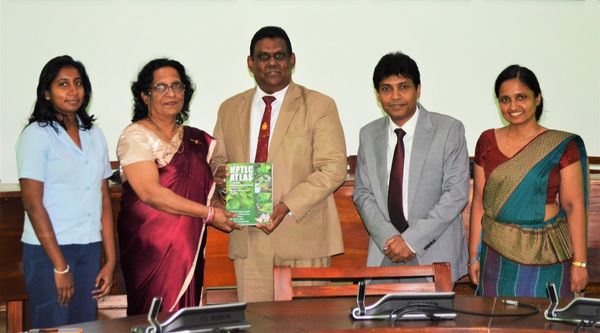
Book Launched – HPTLC Atlas of selected Indigenous Plants Grown in Western Province, Sri Lanka
On 31st July 2023, the book ‘HPTLC Profiles of selected indigenous plants grown in the Western Province of Sri Lanka‘ was launched at the Collage House premises in the presence of the Vice Chancellor, Senior Professor (Chair) H.D. Karunaratne. This book was authored by Professor S.D. Hapuarachchi, Dr N.D. Kodithuwakku, Professor P. K. Perera, Ms P.D.S.A. Silva, and Dr K.D.C Madhushika from the Faculty of Indigenous Medicine and it marks the first crucial step in the development of the HPTLC atlas for commercially viable medicinal plants in Sri Lanka. The comprehensive content includes descriptions of therapeutic activities, biological activities, and HPTLC profiles of carefully selected indigenous plants grown in the Western Province of Sri Lanka. Furthermore, the book aims to serve as an indispensable guide for Ayurveda undergraduates, postgraduates, academics, researchers, practitioners, and all other individuals interested in this field.
About the Book
For centuries, Sri Lankan people have utilized plants in traditional and Ayurveda medicines to treat various ailments and maintain their good health. In recent years, medicinal plants have shown promising pharmacological effects and have become a cost-effective, safe, and efficient alternative to conventional healthcare. Accurate information on the phytochemical profile of these plants is essential for authentication, identification, and determining their therapeutic value, which can lead to the discovery of new therapeutic agents. However, herbal medicine faces several limitations, including inadequate standardization and quality control parameters, and limited scientific data for clinical usage. The quality of herbal drugs is also affected by various factors, including different sources of raw materials, unknown active ingredients, lack of analytical methods, reference compounds, and varying chemical compositions depending on the habitat, plant part, season of collection, and stage of collection. To address these issues, we conducted (High Performance Thin Layer Chromatography) HPTLC method under standardization parameters to identify selected indigenous medicinal plants that lack pharmacopeial monographs.
This is the first step in the development of HPTLC atlas for commercially viable medicinal plants in Sri Lanka. This book provides descriptions, therapeutic activities, biological activities, and HPTLC profiles of selected indigenous plants grown in the Western Province of Sri Lanka. We hope this book will serve as a guide for Ayurveda undergraduates, postgraduates, academics, researchers, practitioners, and all other interested parties. We extend our gratitude to the University of Colombo for providing a research grant for this task and to all those who supported the completion of this book.
Prof. S.D. Hapuarachchi, Dr. N.D. Kodithuwakku, Prof. P. K. Perera, Ms. P.D.S.A. Silva, Dr. K.D.C Madhushika
Faculty of Indigenous Medicine, University of Colombo

